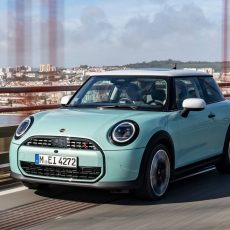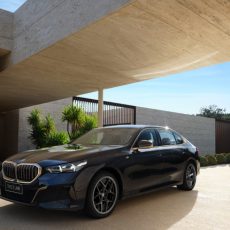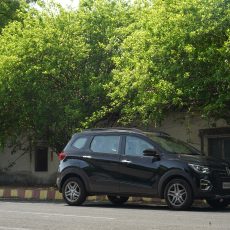The Land Rover Range Rover Velar has received its first facelift and the changes are subtle.
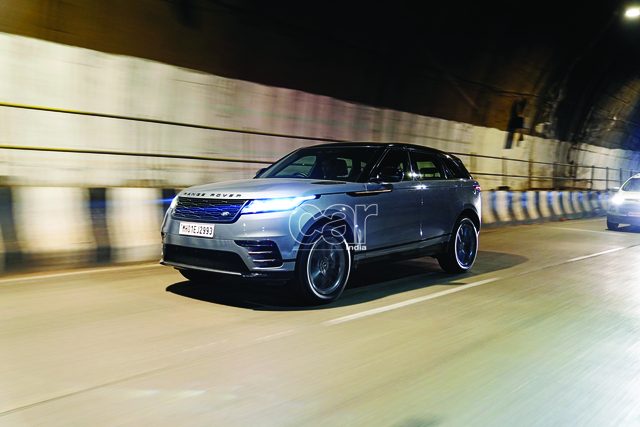
Story: Joshua Varghese
Photography: Sanjay Raikar
In Range Rover’s line-up of luxury sport utility vehicles (SUV), there was a huge gap between the Evoque and the Sport, the latter being more than twice as expensive as the former. It is into that space the Velar slots in nicely. It was launched in India in 2018 and since then the segment has seen considerable advancement. The car you see on these pages is the latest version of the Velar, a facelift meant to tackle its rivals and remain relevant in an extremely competitive space.
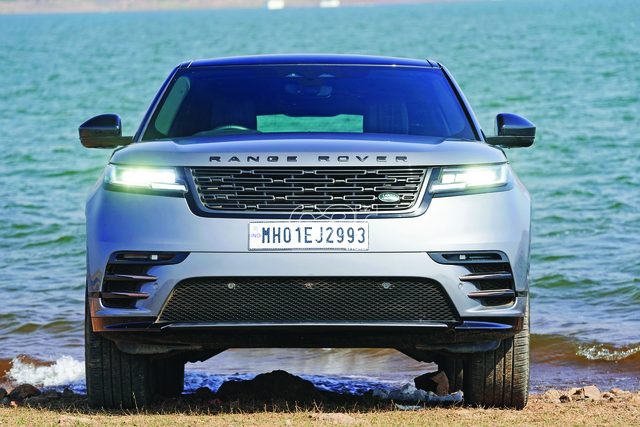
The Range Rover family’s styling is consistent across the range. It certainly works in the Velar’s favour because there are design elements and contours that give it a striking resemblance to the most premium Range Rover. “Reductive” is the word they use to describe the Velar’s design and its simplicity only adds to its appeal. The flush-fitting door-handles and 20-inch wheels offer an interesting balance of form and function. Most of the exterior has been left untouched in this facelift; the only notable new elements are the grille and LED lighting all around. Those who do a lot of night driving may like to know that the headlights are equipped to illuminate the curvature of a road as it approaches.
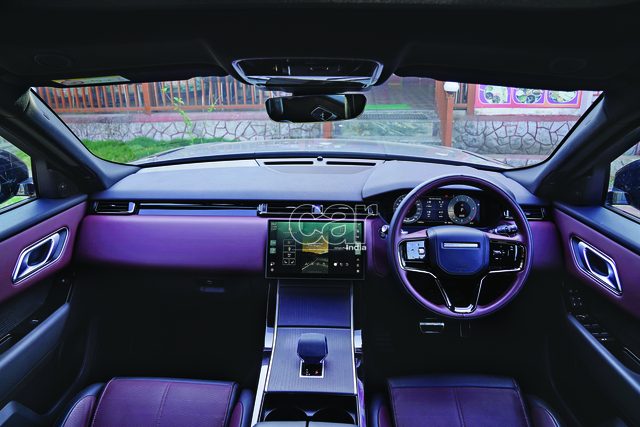
The simplistic design philosophy has been carried forward into the interior as well, resulting in a well-appointed yet clutter-free cabin. If one were to look for an ambience that mimics a lounge in a night club, the Velar’s cabin would come close to the mark. Dark colours are used for the dual-tone scheme and the music of choice is delivered brilliantly by Meridian’s capable sound system. Instead of sofas and polished tables, this luxury SUV offers Windsor leather seats (ventilated with massage functions) and a seamless centre console that is devoid of buttons but features a tasteful element of ash wood.
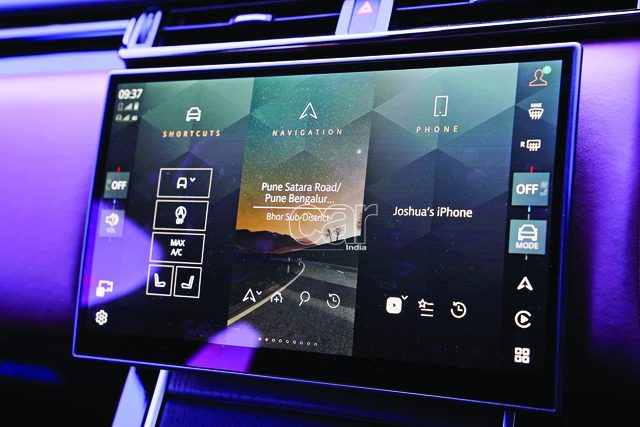
The lack of switches on the dashboard is primarily due to the curved 11.4-inch touchscreen. The tactile feedback that comes with knurled knobs and buttons may be missed but not too much because the new Pivi Pro system works like a dream. One or two taps are all it takes to access most menus. Furthermore, it also has a small sidebar that grants quick access to frequently used functions, including air-conditioning and driving modes et cetera. Android Auto and Apple CarPlay are wireless.
The second row gets none of these benefits. Those passengers are expected to be content with a panoramic sunroof and dedicated a-c controls. Although seating is not cramped, “luxurious” is not the word that springs to mind to describe the experience. It is reasonable for two people even for long drives but three may be a bit of a stretch due to the transmission tunnel. That said, ingress and egress could have been better and would have improved the usability of the second row. Land Rover have been more generous with space for luggage. The boot is cavernous and also stores a full-size spare wheel. Quite uncommon in this segment.

Under the bonnet, this Velar gets the D200 Ingenium unit. A 2.0-litre, four-cylinder, mild-hybrid, turbo-diesel engine that develops 204 hp between 3,750 and 4,000 rpm and a peak torque of 430 Nm between 1,750 and 2,500 rpm. Transmission is managed by an eight-speed automatic unit and power is sent to all four wheels. There is considerable room for improvement when it comes to the diesel engine’s refinement levels. Although it is fairly noisy, most of that noise does not reach the cabin. In addition to good insulation, the Velar also makes use of an active noise cancellation system which enables it to meet the expectations of the segment. For those who need further refinement, there is a 2.0-litre turbo-petrol on offer as well.
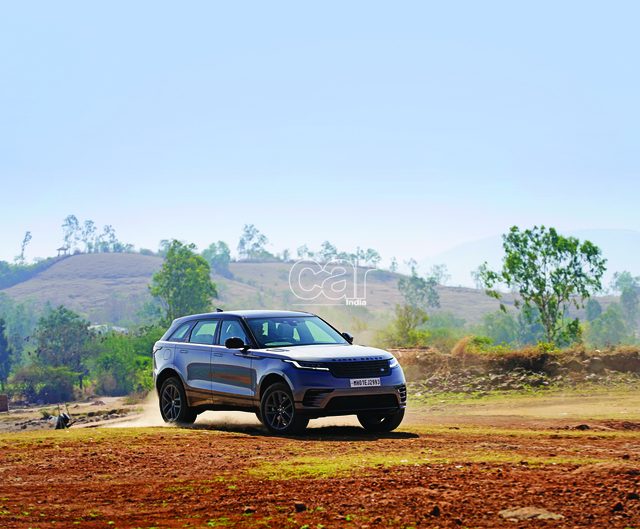
Driving the Velar smoothly at low speeds was a challenge because of its non-linear power delivery and turbo lag. The gentlest nudges to the throttle pedal were rewarded with nothing and then a sudden rush of torque: not the best for new drivers, particularly in stop-go traffic. I found it most manageable in Eco and Comfort modes but finer tuning would be appreciated. In Sport mode, the whole car felt more sensitive. On open roads, some may find it exciting but among the three, I feel it is going to be the least used mode. Above 50 km/h, the Velar became easier to drive. The steering had a nice weight to it that made driving intuitive and the slick shifts from the transmission ably supported the experience. Despite its size, the Velar never felt like a large SUV and was fairly easy to navigate around town once I had got to terms with its quirks.
To describe the performance in a word, “adequate” would be apt. It did not blow me away with its acceleration yet there was enough grunt to cruise comfortably at triple-digit speeds without straining the engine. A fast and comfortable road trip is certainly well within its potential. However, if thrill and sporty handling are among your priorities, look elsewhere. The Velar’s strengths lie in a comfortable ride and versatility. The air suspension supports a ride quality that is admirable even over poor roads and it also allows one to raise or lower the ride height of the SUV. It stands tallest in Off-road mode and that proved to be extremely useful. Traffic was at a standstill due to construction on the road and the Velar barely flinched when I guided it off the road, past the construction and back on the road again.
The Land Rover roots are evident because the Velar gave me immense confidence to bravely venture off the road. Owners may never experience this side of the SUV but it is certainly reassuring to know that it is well within its capabilities. An arsenal of cameras and off-road assistance systems allow even the most inexperienced driver to enjoy the great outdoors without messing up the bodywork of this luxury SUV. As mentioned earlier, this is not a car that is eager to be driven enthusiastically but it is fully capable of carrying speed around a curve without sacrificing composure. Braking also is fairly adequate and leaves no cause for complaint, though there is room for improvement.
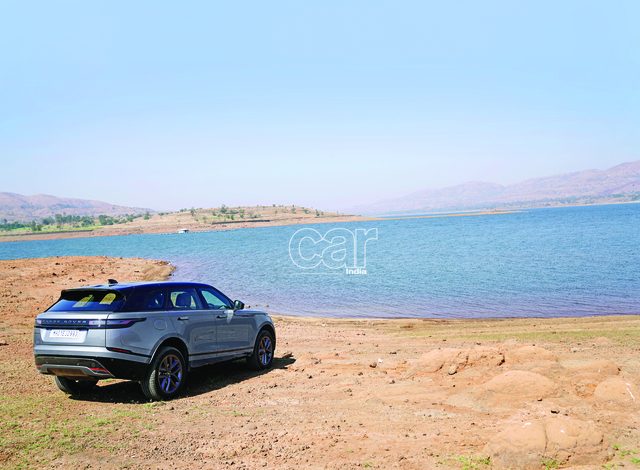
At Rs 94.30 lakh (ex-showroom), the Land Rover Range Rover Velar is placed between its immediate German rivals because there are not many options in that space with a diesel powertrain. It is a good luxury SUV to drive but not one that is great to be driven in and while it is not the benchmark product in its segment, it is not far off from the expectations either. It should appeal to a customer who wants a luxury SUV with a distinctive road presence.
Edit 28-03-2024: The Velar is now locally manufactured and the D200 Dynamic HSE is priced at Rs 87.90 lakh (ex-showroom).
Watch the full video here:
Land Rover Range Rover Velar D200
Price: Rs 94.30 lakh (ex-showroom)
Engine: 2.0-litre, four-cylinder, mild-hybrid, turbo-diesel
Transmission: Eight-speed automatic, all-wheel-drive
Max Power: 204 hp between 3,750 and 4,000 rpm
Max Torque: 430 Nm between 1,750 and 2,500 rpm
Weight: 1,928 kg (approximate)
Also Read: Hyundai Creta 2024 1.5 Diesel First Drive Review


